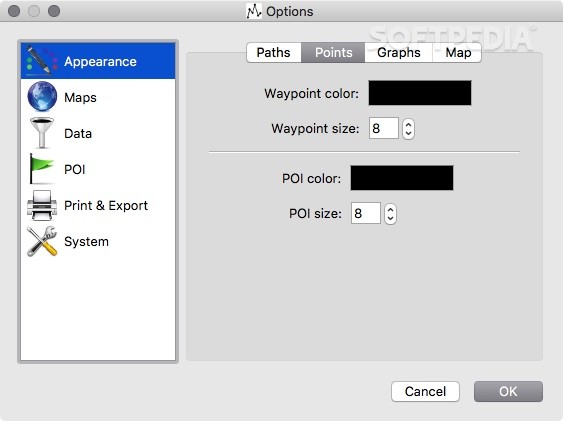

High frequently used routes will light up strong due to the addition effect of the width added. Locations next to each other will add up due to the width usage. The addition (line 8), instead of an assignment, is still required due to the usage of width. 7 times, it is only added one time instead of seven times. But we optimise this by first grouping over (x,y) and counting the number of occurrences. We could iterate over df2 and add each point one by one. Finally, both time fields are converted to a timestamp object so we end up with the following dataframe (in this case almost 1 million locations): The elevation might be absent so we need to check its existence before converting (line 31).Īll information is added to an array that is converted to a dataframe in line 33. The point(element trkpnt) contains two attributes with the latitude and longitude (26–27) and two child elements with the timestamp of the log entry and the elevation (line 28–31). The segment contains all logged locations so by iterating over the segment all logged locations are parsed (line 25). walking) (lines 22–23).įrom the track the first (and only) segment is selected (line 24). The track element contains the elements name and type that contain the name of the activity and the type of activity (e.g. find() can be replaced by iterating the results of. This is sufficient since none of my GPX files contains multiple tracks, or even multiple segments. This finds the first occurrence of an element with the specified name. Then (line 21) the track is selected, in this case with the. The start time of the track log is stored in the sub element of the element. All elements reside in a namespace that is defined in line 6. The root element is retrieved from the document (line 19) which is in this case the element. This code retrieves all files from directory data and parses all files with the. This implementation makes use of ElementTree from the default XML implementation in Python. But for educational purposes an implementation is offered. The following data structure is assumed for parsing the GPX files: 02-01-20 13:29 71.1 Importing GPX filesįor reading GPX files several Python libraries are available, like gpxpy. Tracks created with SportsTracker include the lon/lat attributes and the time and elevation elements.

The element extensions allows each device/app to add additional information like heartrate ( hr in the Garmin example above), speed or course (not used by Garmin). It has optional fields like time ( time)and elevation ( ele). lost connection or power failure, a new segment ought to be created.Ī trkpt has the mandatory attributes lat and lon to specify the location. The trkseg segment elements contains a list of track points ( trkpt). The specification allows for more fields but these are not used by e.g. At track level there are some fields with the name and type of the track. A track consists of one or more segments, each stored in a trkseg element. The trk element contains the stored track. The metadata specifies the source and creation time of the file. It contains a metadata element and a trk element. SportsTracker and Fitbit have the same structure but differ in the details. The example above is a track stored by Garmin, tracks stored by e.g.


 0 kommentar(er)
0 kommentar(er)
